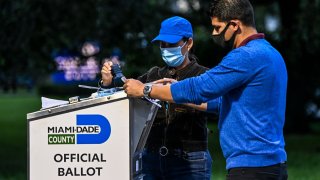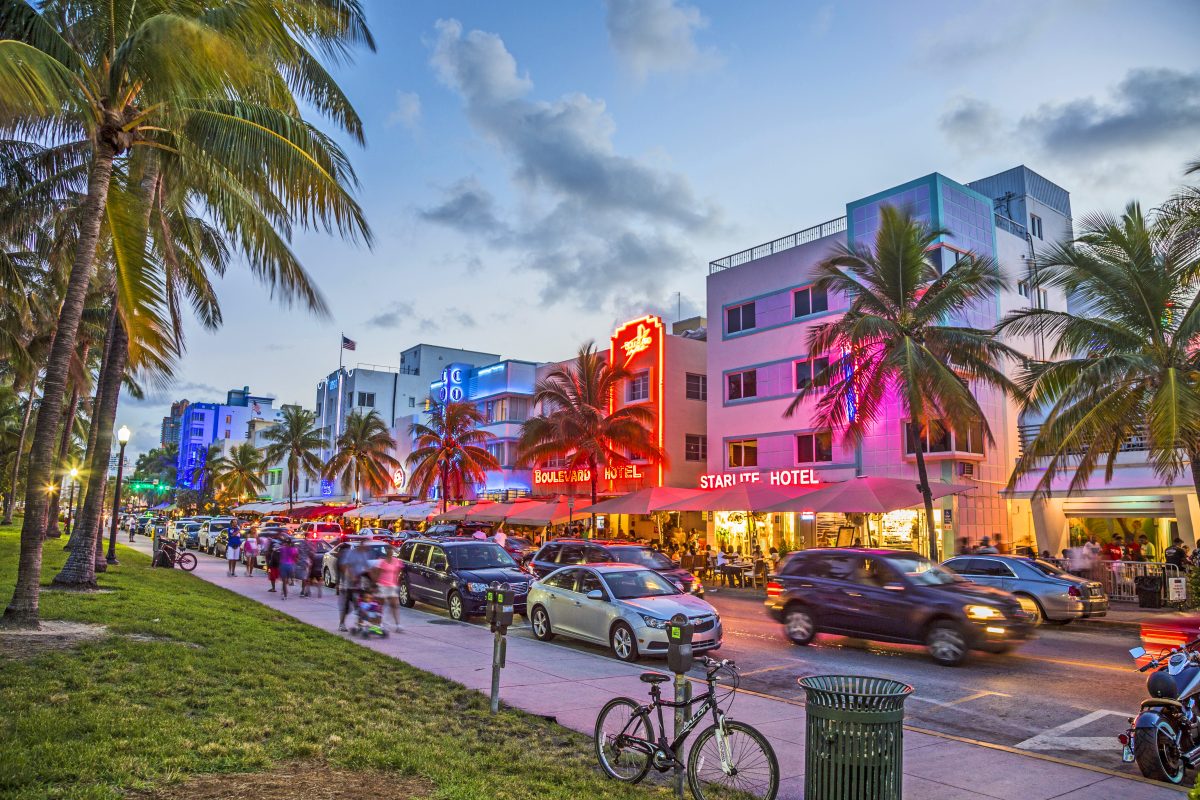
Florida officials initially rejected about 1% of mail-in ballots in November's election because of mismatched or missing signatures, a study released Tuesday shows, but three-quarters of those voters were able to fix the problem and have their ballot counted.
Still, the study by political science professor Dan Smith at the University of Florida showed wide disparities between counties in the percentage of ballots initially rejected and that younger voters and minorities were more likely to have theirs tossed aside than older and white voters.
A record 4.8 million Floridians cast mail-in ballots in November's election — about 44% of the record 11 million votes cast as former President Donald Trump carried the state by 3 percentage points. Typically, less than a third of Floridians vote by mail, but the option became more popular because of the pandemic. Floridians do not have to state a reason such as absence or illness to request a mail ballot and are given the opportunity to fix or “cure” any problems if their ballot is rejected.
The Republican-led Legislature is considering bills that would make mail-in voting more difficult, even though all sides agree Florida ran a near-perfect election in November. Even Trump, who has railed against mail-in voting in other states, has praised Florida's system and used it in last year's primaries after moving his official residence to his Mar-a-Lago estate.
Get South Florida local news, weather forecasts and entertainment stories to your inbox. Sign up for NBC South Florida newsletters.
“The process is working. It could be improved in terms of the ability to cure ballots that are deficient, but in no way should we be moving in the other direction,” Smith said.
Smith's study, sponsored by the group All Voting is Local, looked at 4.6 million of the mailed ballots. He found that 47,000 were initially rejected with 34,000 of those ballots being fixed by voters after being notified. That left 13,000 rejected and not counted, or one out of every 353 cast.
That's a significant improvement over the 2016 and 2018 elections, when Smith found that more than one mail-in ballot out of a hundred was ultimately rejected. He credited the improvement to the state adding more time for voters to correct their ballots and to major political parties and voting rights groups aggressively alerting voters when their ballots were rejected.
Local
When Florida voters return mail-in ballots, they sign the envelope. When ballots arrive at county elections office, those signatures are initially screened by computerized scanners or by employees who match them against those on file. No one's signatures are ever exactly alike, so some judgment is required.
Any rejected ballot is examined further — at any point, the decision can be made to count it. Any ballots that remain rejected are then inspected by that county's three-person canvassing board, which decides by majority vote whether to count them.
About half the state’s 67 counties had an initial rejection rate of less than 1%, Smith found, but six had rejection rates above 2%, including tiny Madison County, where the rejection rate was almost 4%.
Heath Driggers, the elections supervisor in the county of 18,500 residents east of Tallahassee, had no immediate comment on Smith's finding. Driggers took office after the election.
Smith wonders if the discrepancies in initial rejection rates might be because some counties have their computers and employees judge signatures more strictly than others — but there is no documentation to show that. He would like to see more uniform standards and training between counties on signature verification.
If a ballot remains rejected, the voter is notified and has until two days past Election Day to visit the supervisor's office and correct the problem. The deadline in 2016 was the day before the election, but a court in 2018 ruled that was unfair to voters whose ballots arrived on Election Day. Unlike some states that don't process mail-in ballots until Election Day, Florida counts them as they arrive, so those who cast early might have a week or more to fix any issue.
Other findings include:
— Black had their ballots initially rejected 1.4% of the time and Hispanics 1.3%, almost double the 0.8% rate of white voters. Collier County in southwest Florida had the highest percentage of Black rejections at 5%, compared to the county's rate of 1.5% for white voters. Its 3% rejection rate for Hispanics was among the highest.
Collier elections spokeswoman Trish Robertson said older white voters tend to have longer voting histories in her county than minority voters, giving officials more signatures to compare. She said that might be the reason minority voters have more ballots rejected.
— The younger the voter, the more likely the ballot will be initially rejected. In the 18-21 age range, 2.4% of mail-in ballots statewide were rejected and 2.1% in the 22-25 range. Each age grouping getting older has fewer ballots rejected, with seniors 66 and older having the fewest rejections at 0.7%.



